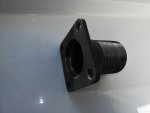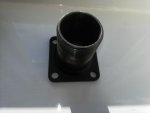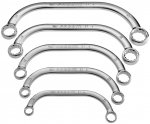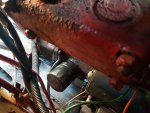James_Calvert
Well-Known Member
A possible problem with one like the stainless one piece one pictured above is that you may want to rotate it a bit on the square flange to meet your exhaust hose. It isn't necessarily square on.
On getting the old one off the flange, you need a big set of stillsons/pipe wrench. There's a big lock nut to back off first. Then it will hopefully unscrew...
On getting the old one off the flange, you need a big set of stillsons/pipe wrench. There's a big lock nut to back off first. Then it will hopefully unscrew...




